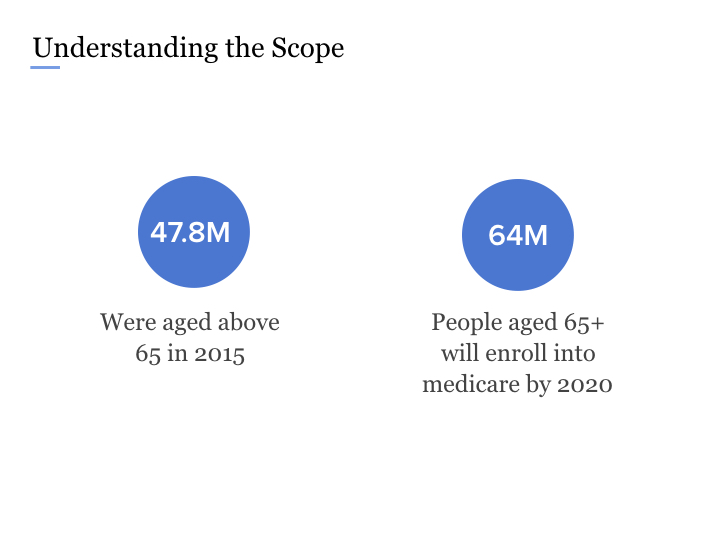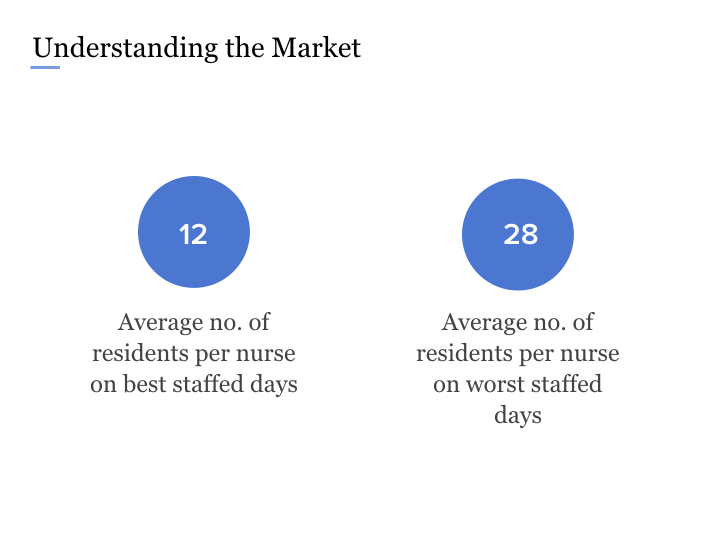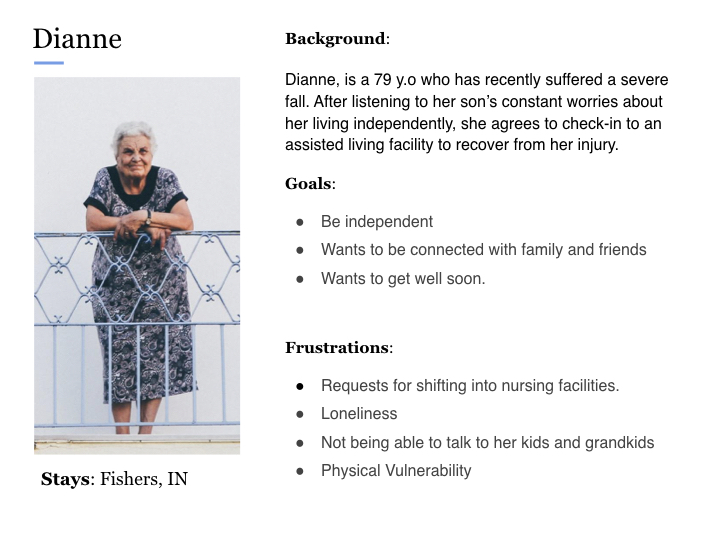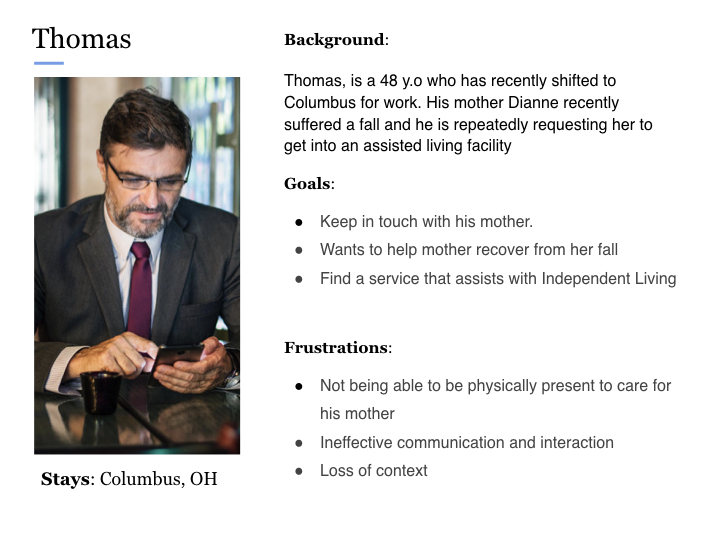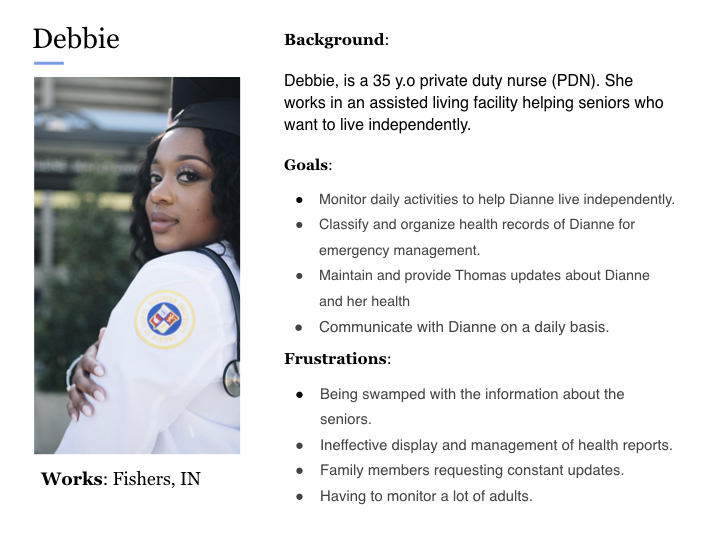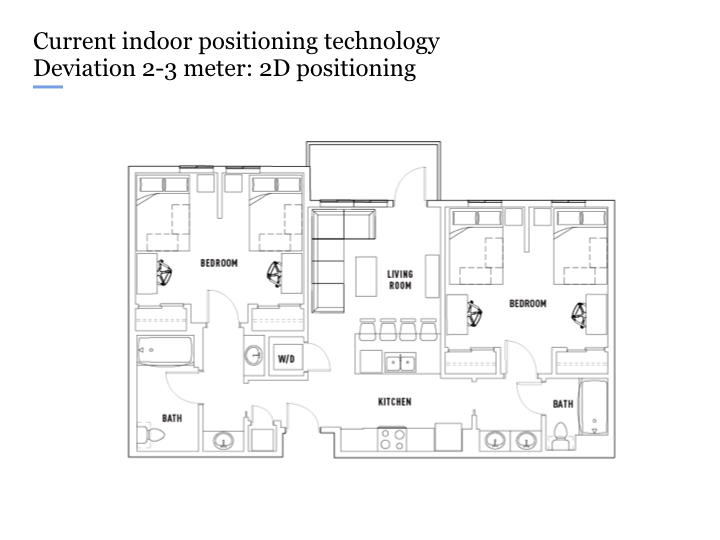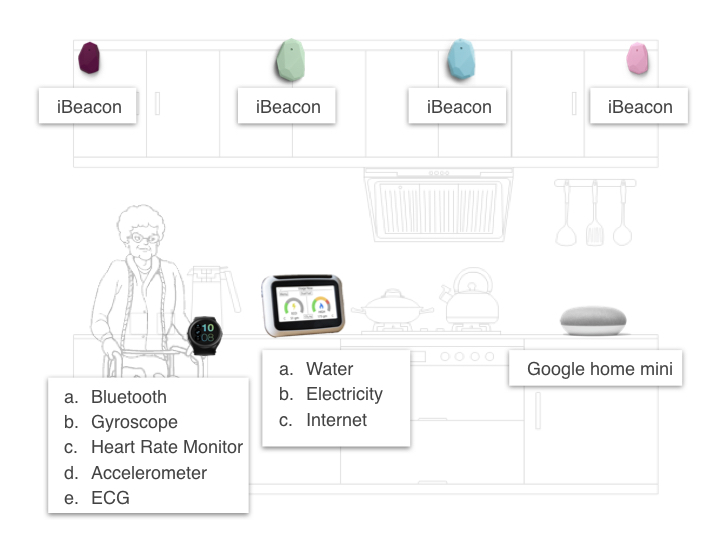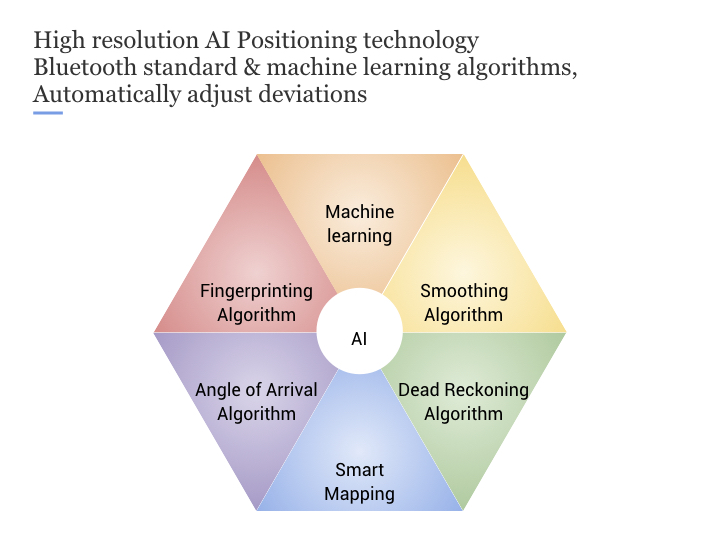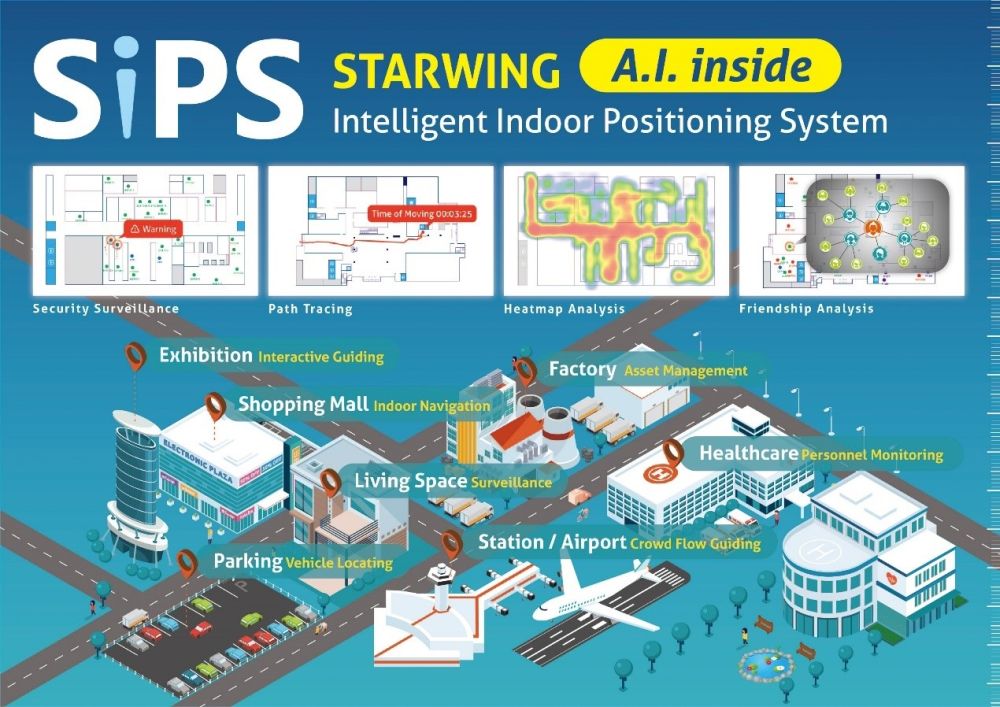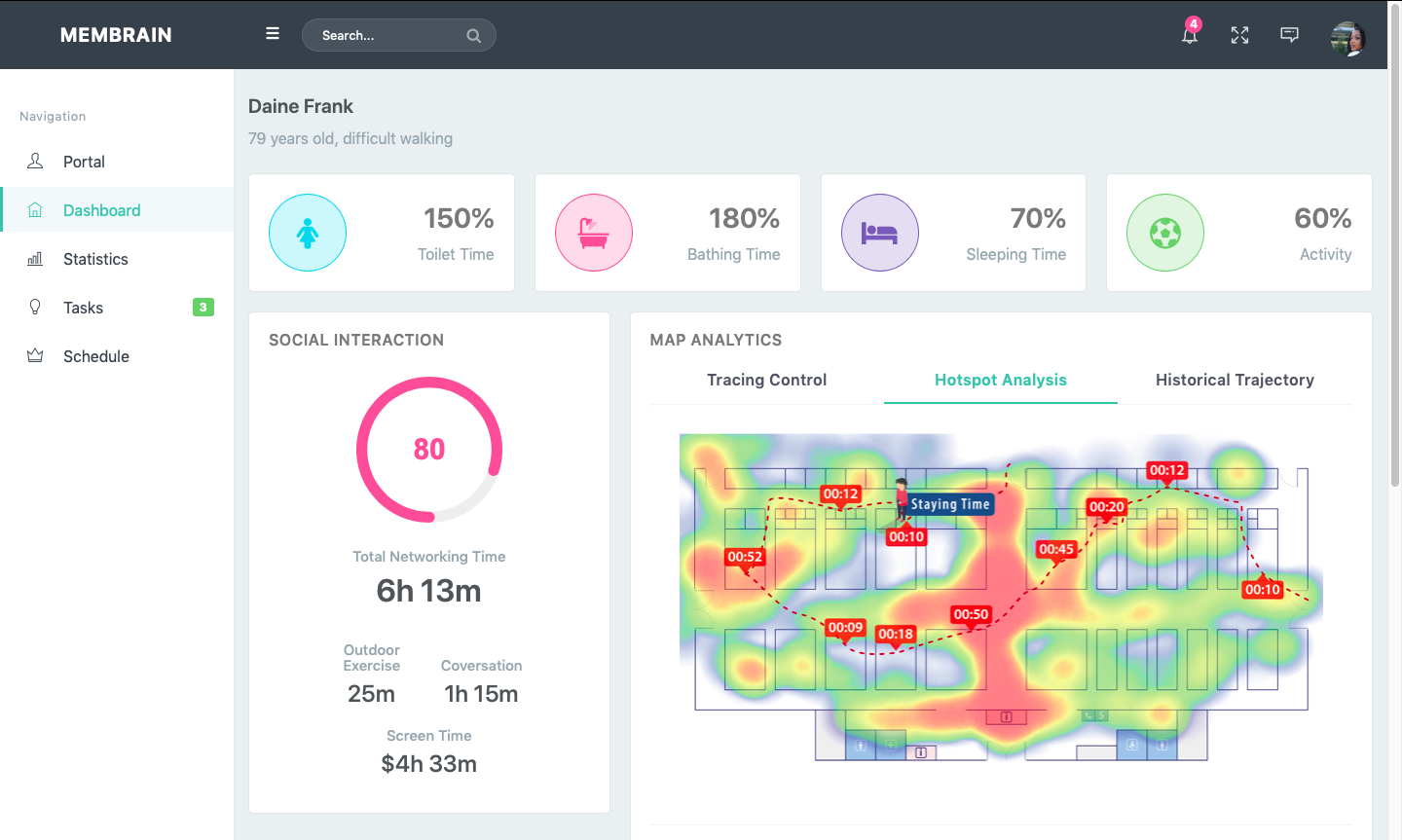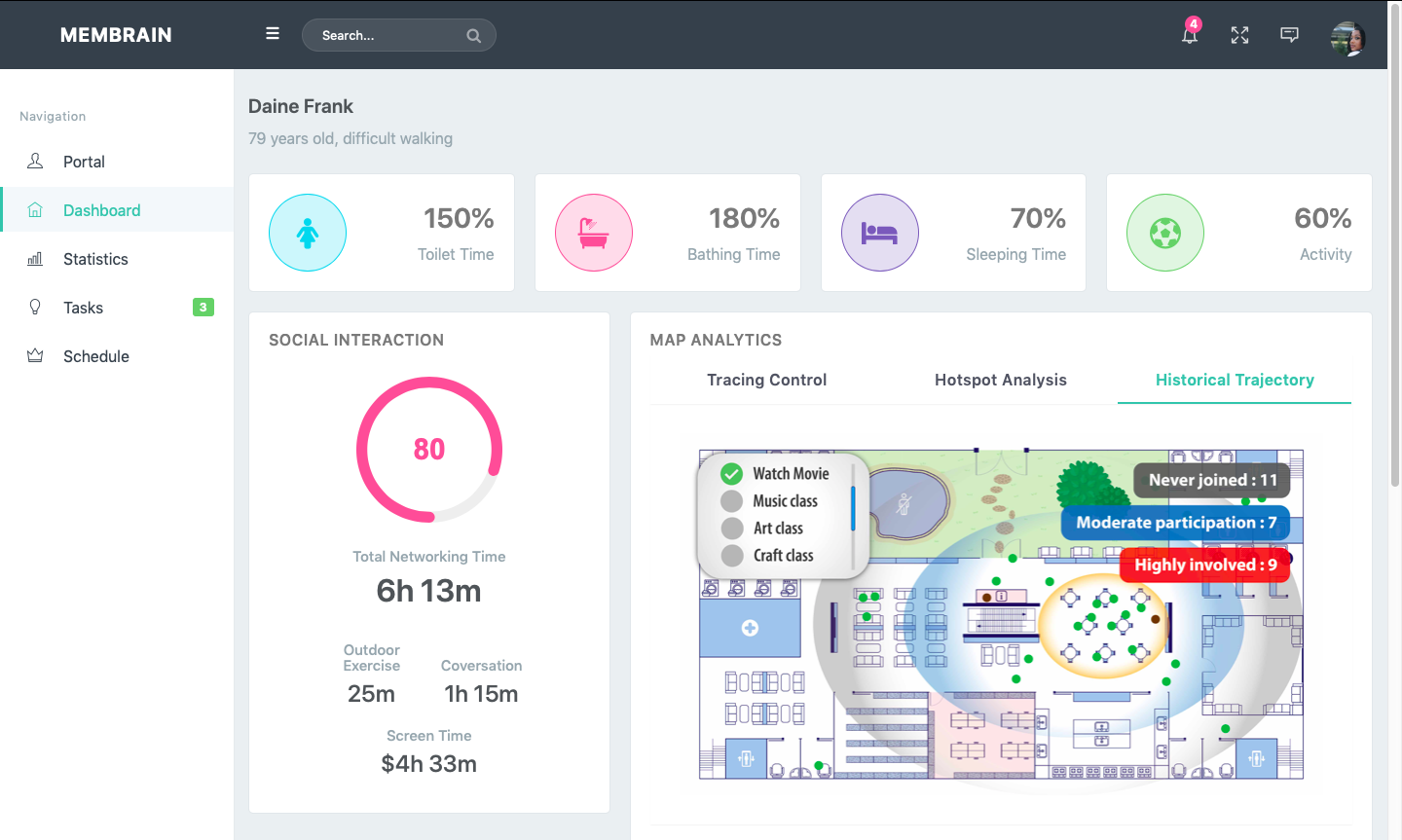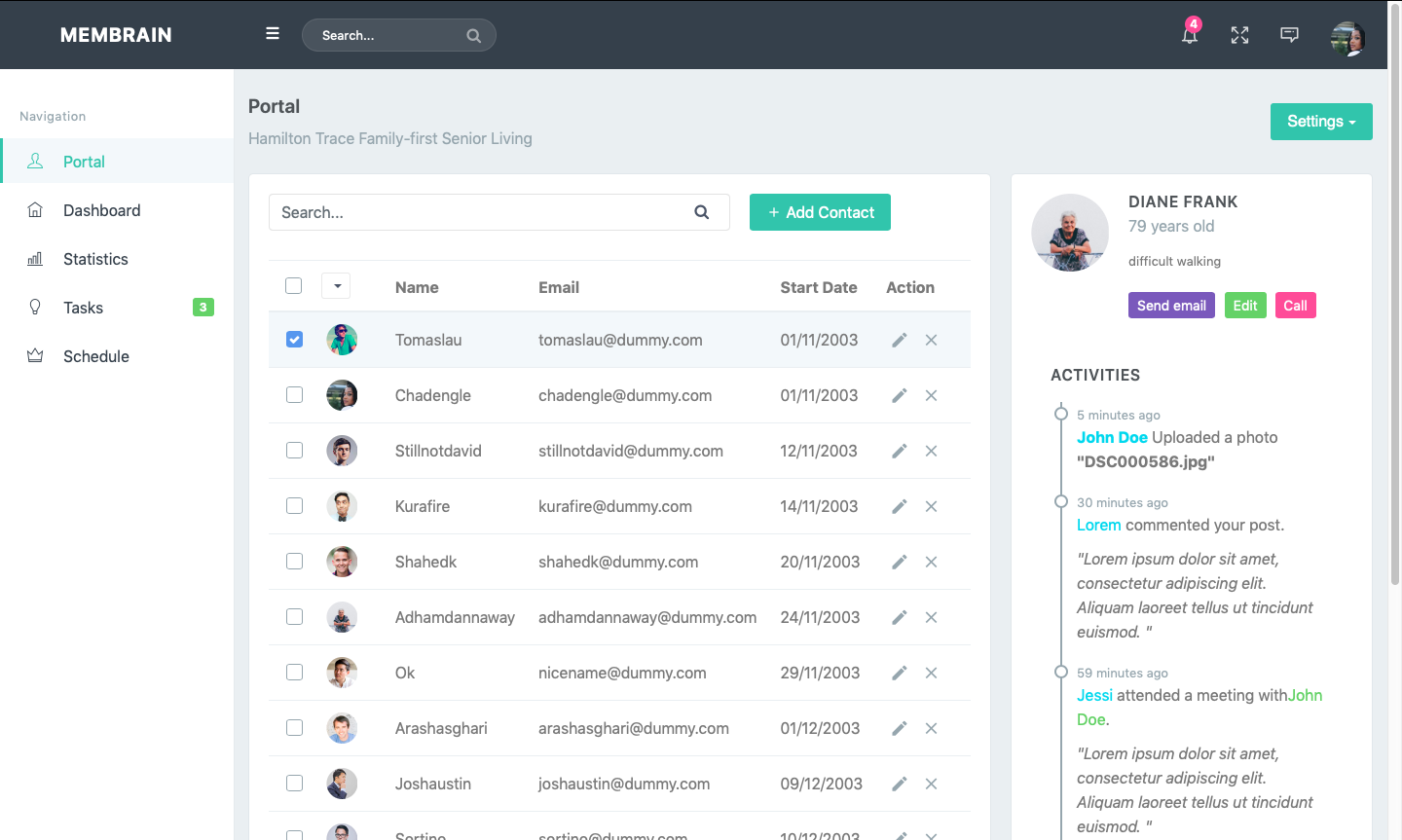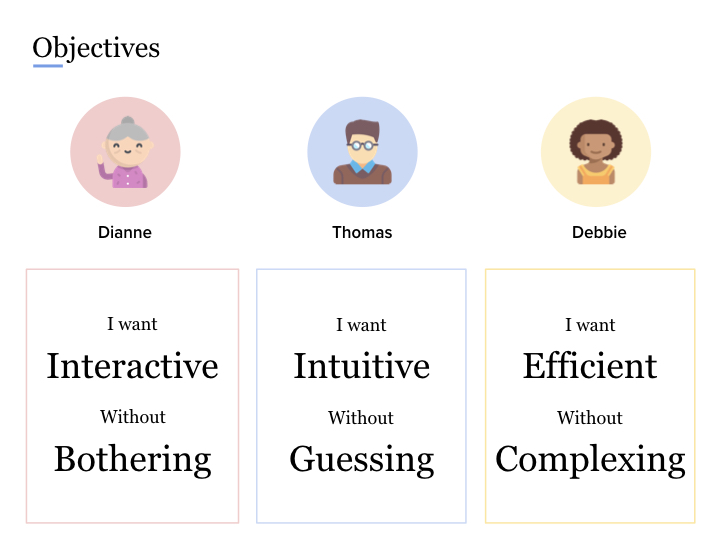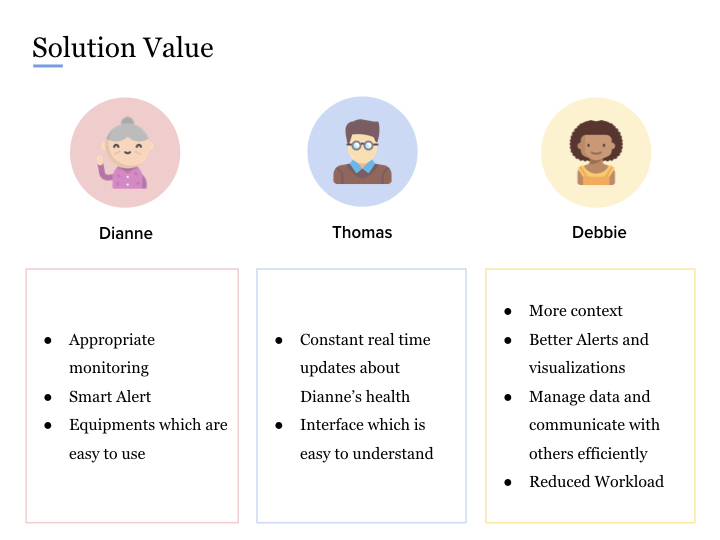OVERVIEW
About the Project
This rapid design project was based on a prompt given by Createability to design the service or discover the new business model for its current training service. Three-person teams were created with assigned roles and responsibilities simulating today’s work environment. We conducted research, prototype ideas, and finally pitched our solution to the client.
-
Role:
Design Manager -
Tools:
HTML, CSS, Javascript -
Client:
Createability -
Timeline:
January 2019-February 2019
THE CHALLENGE
How could we improve service delivery, facilitate connecting data and business process efficiency?
Although we have IoT devices that collecting health data and IoT platform that showing health information, does it really help our target users live independently? Or facilitate our management and communication?
THE SOLUTION
We decided to apply an AI indoor positioning technology that could overcome the limitation to the current system and achieve the deviation to 10-30cm. By doing so, we can eliminate the number of sensors, and by analyzing the data, we could have more context to understand the behavior of the user.
USE CASE
Scenario
-
After her fall and her son’s persistence, Diane moves into an assisted living facility that has been outfitted with Createability’s Product.
-
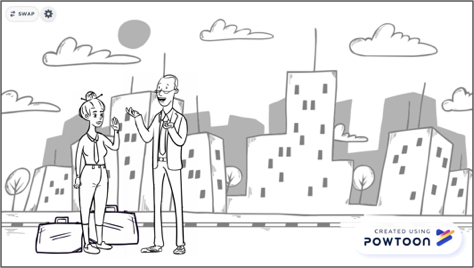
-

-
Debbie is ready to connect with Dianne and understands her needs to live independently. Thomas specifically requests Debbie to monitor his mothers daily activities.
-
Dianne continues to live independently and make a recovery.
-
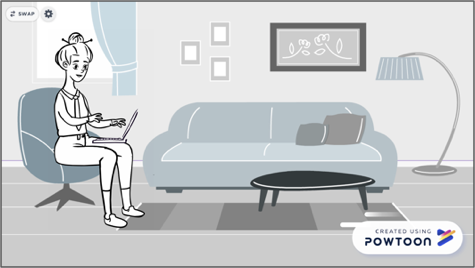
-
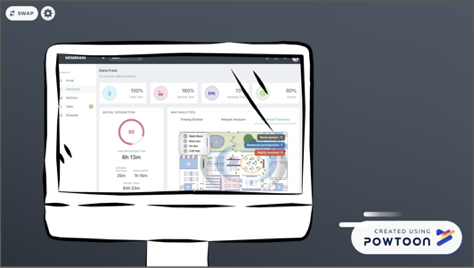
-
Debbie continues to monitor the condition of Dianne and capture her improvements.
-
Thomas receives constant updates about Dianne’s health and daily life and feels less guilty about living far from his mother.
-
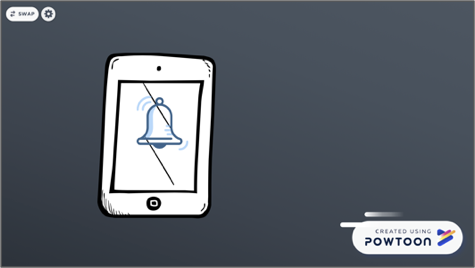
BUSINESS STRATEGY
Business Model Canvas
-
Market Strategy
• Approaching companies that create new assisted living facilities.
• Utilizing existing resources to target current assisted living facilities to outfit the Indoor Positioning System. -

-
Value for Assisted Living Facilities
• Ground-level implementation - implementing while building facilities
• Lesser chances of errors -

-
Value for Createability
• Expansion into new market segments
• Centralized system for monitoring and updates -

-
Key Activities
• Providing Customized Healthcare
• Real-time analysis
• Maintaining timely analysis
• Marketing
• Advertising -

-
Key Partners
• Contract and Hardware Manufacturers
• Developers to manage to build and to train the AI
• Cloud Service Partner -

-
Key Resources
• Research and Development team
• AI and Data management -

PRODUCT PITCH


